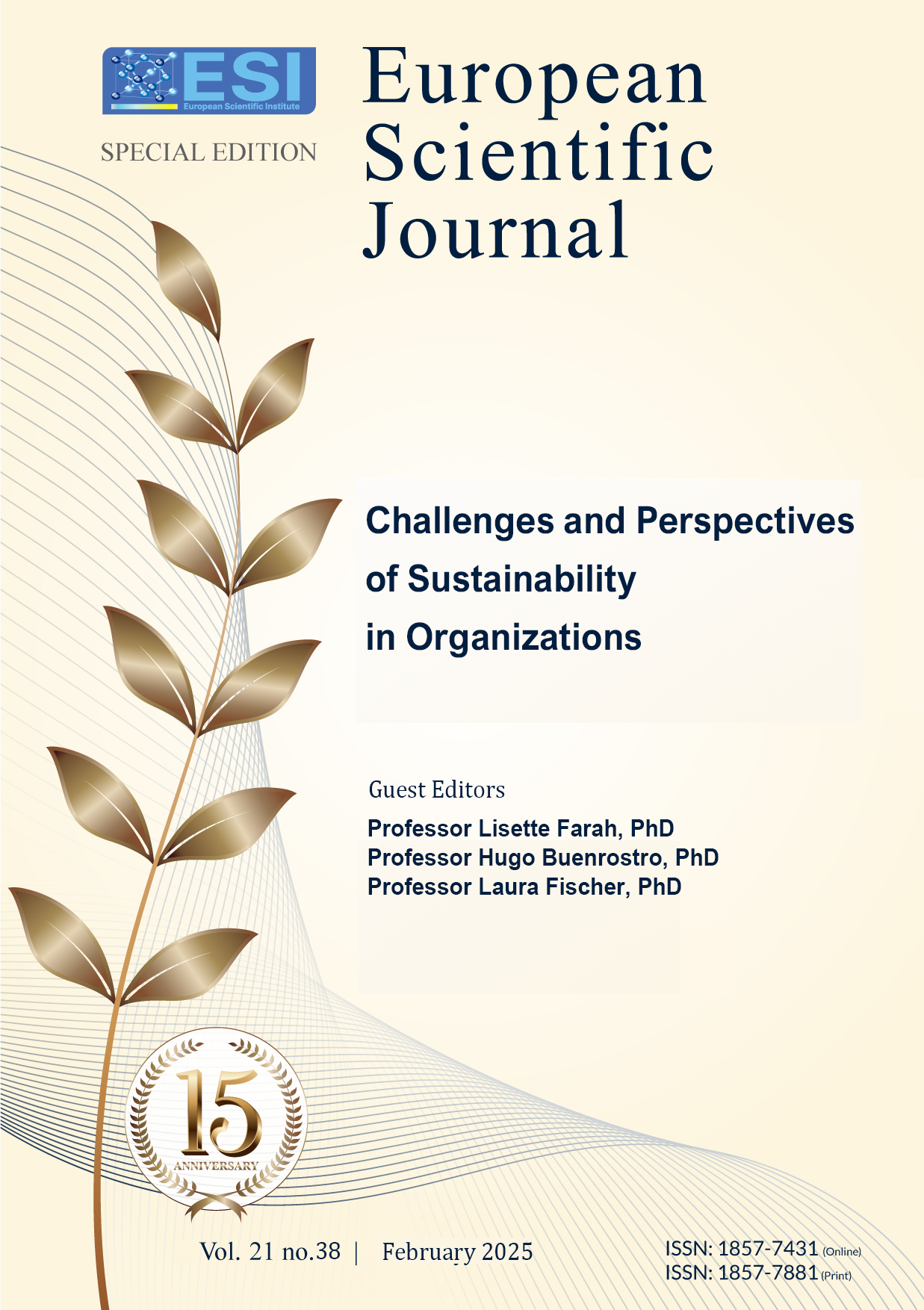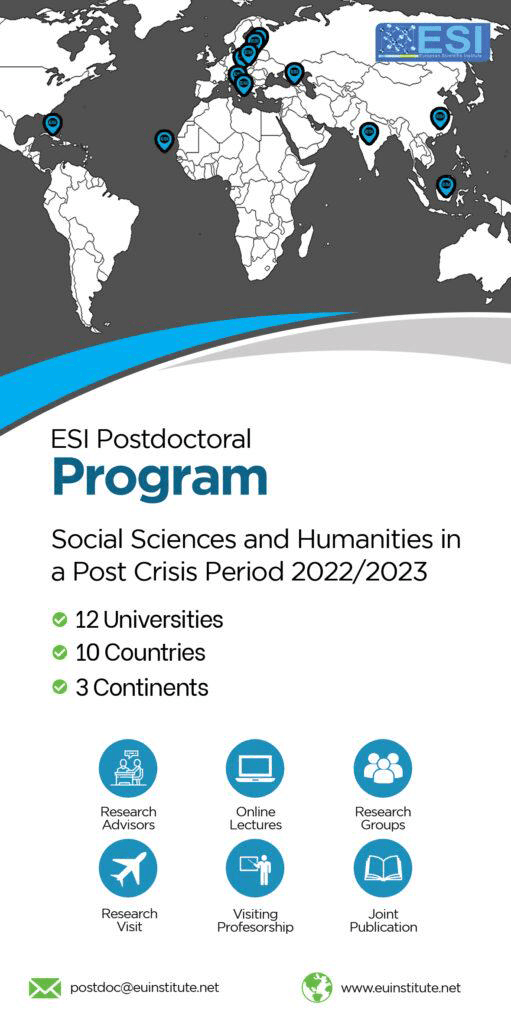Factors That Predict the Level of Internationalization of Small and Medium Mexican Export Companies
Abstract
Globalization has led exporting companies to design and implement strategies to increase their presence in international markets; however, it is necessary to have a greater understanding of the factors that determine the level of internationalization, since literature alone does not provide sufficient and specific information for decision-making. The objective is to determine which variables predict the level of internationalization of Mexican export companies, by validating a random sample with 119 export companies from the state of Sonora. The methodology was descriptive with a quantitative approach. The information was processed and analyzed in the SPSS program using the ordinal logistic regression model. The results support that the price of the product, the installed capacity, and the commercial agreements are significant variables that directly predict the level of internationalization of companies, concluded that they are important for the growth, diversification, and permanence of an international market to implement mechanisms to improve exports by their resources and capacities. This can be taken up again in subsequent studies and a practical sense in the exporting companies by promoting exporters' actions that encourage new procedures, processes, and products that allow a monetary impact on them.
Downloads
Metrics
PlumX Statistics
References
2. Andersen, O. (1993). On the internationalization process of firms – A critical analysis. Journal of International Business Studies, 24(2), 209-231. http://doi.org/10.1057/palgrave.jibs.8490230
3. Araya, L.A. (2009). El proceso de internacionalización de empresas. TEC Empresarial, 3, 18-25.
4. Augusto-Felício, J., Meidutė, L., & Kyvik, Ø. (2016). Global mindset, cultural context, and the internationalization of SMEs. Journal of Business Research, 69(11), 4924-4932. https://doi.org/10.1016/j.jbusres.2016.04.054
5. Becerra-Pérez, L.A. & Sánchez-Meléndez, E.P. (2021). The internationalization of the company and the limited use of the Pacific Alliance Trade Agreement. The case of the exporting companies of Sinaloa. Economíaunam, 18(53), 140-166.
6. Becerra, D.P. (2010). La globalización y el crecimiento empresarial a través de estrategias de internacionalización. Pensamiento & Gestión, 26.
7. Blanco-Jiménez, M., Cruz-Álvarez, J., Tejeda-Villanueva, A. & Romo, H. (2018). Internationalization of Mexican Companies in the U.S. South and their Global Competencies. Norteamérica Revista Académica del CISAN-UNAM, 13(2), 143-168. http://doi.org/10.20999/nam.2018.b004
8. Botello, H.A. (2014). Condiciones y determinantes de la internacionalización de las empresas industriales latinoamericanas. Apuntes: Revista de Ciencias Sociales, 41(75), 47-78. https://doi.org/10.21678/apuntes.75.716
9. Cardoza, G., Fornes, G., Farber, V., González-Duarte, R., & Ruiz-Gutiérrez, J. (2016). Barriers and public policies affecting the international expansion of Latin American SMEs: Evidence from Brazil, Colombia and Peru. Journal of Business Research, 69, 2030-2039. https://doi.org/10.1016/j.jbusres.2015.10.148
10. Clark, D., Li, D., & Shepherd, D. (2018). Country familiarity in the initial stage of foreign market selection. Journal of International Business Studies, 49, 442-472. https://doi.org/10.1057/s41267-017-0099-3
11. Cronbach, L.J. (1951). Coefficient alpha and the internal structure of test. Psychometrika, 16, 297-334. https://doi.org/10.1007/bf02310555
12. Díaz de Rada, V. (2003). Cea-D’Ancona, M.A. Análisis multivariante. Teoría y práctica en la investigación social. Madrid, Síntesis, 2002. Empiria. Revista de Metodología de Ciencias Sociales, 0(6), 207. https://doi.org/10.5944/empiria.6.2003.941
13. Escandón, D.M. & Hurtado, A. (2014). Factores que influyen en el desarrollo exportador de las Pymes en Colombia. Estudios Gerenciales, 30(131), 172-183. http://doi.org/10.1016/j.estger.2014.04.006
14. Frías-Navarro, D. (2014). Apuntes de SPSS. Universidad de Valencia. Available online: www.uv.es/friasnav/ApuntesSPSS.Pdf
15. George, D. & Mallery, P. (2019). IBM SPSS Statistics 26 Step by Step. Available online: http://dx.doi.org/10.4324/9780429056765
16. González, J.L., Navarro, M. & Peña, I. (2010). Internacionalización de empresas jóvenes innovadoras en España. Revista Europea de Dirección y Economía de la Empresa, 19(2), 61-82.
17. Hernández-Sampieri, R., Fernández-Collado, C. & Baptista-Lucio, P. (2016). Metodología de la investigación. Editorial McGraw-Hill. México.
18. Hitt, M., Li, D. & Xu, K. (2016). International Strategy: From Local to Global and Beyond. Journal of World Business, 51(1), 58-73. http://dx.doi.org/10.1016/j.jwb.2015.08.016
19. Howell, D.C. 2014. Fundamental Statistics for the Behavioral Sciences. Wadsworth Cengage Learning.
20. Instituto Nacional de Estadística y Geografía, INEGI. (2022). Directorio Estadístico Nacional de Unidades Económica, DENUE. Total de unidades económicas en México. INEGI, 2019.
21. Jiménez-Martínez, J.I. (2007). Determinantes para la internacionalización de las pymes mexicanas. Análisis Económico, 22(49), 111-131.
22. Johanson, Jan, & Vahlne, J. -E. (2017). Internationalization process of firm – model of knowledge development and increasing foreign market commitments. International Business, 145-154. http://doi.org/10.4324/9781315199689-9
23. Johanson, J. & Vahlne, J. -E. (2009). The Uppsala internationalisation process model revisited: From Liability of Foreignness to Liability of Outsidership. Knowledge, Networks and Power, 153-186. https://doi.org/10.1057/9781137508829_7
24. Johanson, J. & Vahlne, J. -E. (1977). Internationalization process of firm – model of knowledge development and increasing foreign market commitments. Journal of International Business Studies, 8(1), 23-32. http://doi.org/10.1057/palgrave.jibs.8490676
25. Kampouri, K., Plakoyiannaki, E., & Leppäaho, T. (2017). Family business internationalization and networks: Emerging pathways. Journal of Business & Industrial Marketing, 32(3), 357-370. http://dx.doi.org/10.1108/JBIM-04-2015-0066
26. Knight, G.A. & Cavusgil, S.T. (2004). Innovation, organizational capabilities, and the born-global firm. Journal of International Business Studies, 35(2), 124-141. https://doi.org/10.1057/palgrave.jibs.8400071
27. Knight, G.A. & Cavusgil, S.T. (1996). The Born Global Firm: a challenge to traditional internationalization theory. Export Internationalising Research–Enrichment and Challenges, 11-26.
28. Madsen, T. -K. & Servais, P. (2017). The Internationalization of Born Globals: An Evolutionary Process? International Business Review [Internet], USA, Available online: http://doi.org/10.4324/9781315199689-27
29. Madsen, T. -K., & Servais, P. (1997). The Internationalization of Born Globals: An Evolutionary Process? International Business Review, 6(6), 561-583. https://doi.org/doi:10.1016/S0969-5931(97)00032-2
30. McDougall, P., Shane, S., & Oviatt, B.M. (1994). Explaining the Formation of International New Ventures: The Limits of Theories from International Business Research. Journal of Business Venturing, 9(6), 469-487. https://doi.org/doi:10.1016/0883-9026(94)90017-5
31. Melén, S. & Nordman, E.R. (2009). The Internationalisation Modes of Born Globals: A Longitudinal Study. European Management Journal, 27(4), 243-254. https://doi.org/10.1016/j.emj.2008.11.004
32. Metsola, J., Leppäaho, T., Paavilainen-Mäntymäki, E., & Plakoyiannaki, E. (2020). Family business internationalization process: state of the art and ways to follow. International Business Review, 29(2). https://doi.org/10.1016/j.ibusrev.2020.101665
33. Morello, G. (2001). El proceso de internacionalización. Economía y Desarrollo, 129(2), 178-192.
34. Niittymies, A., & Pajunen, K. (2020). Cognitive foundations of firm internationalization: A systematic review and agenda for future Research. International Business Review, 29(4). https://doi.org/10.1016/j.ibusrev.2019.101654
35. Paul, J., Parthasarathy, S., & Gupta, P. (2017). Exporting Challenges of SMEs: A review and future research agenda. Journal of World Business, 52(3). https://doi.org/10.1016/j.jwb.2017.01.003
36. Pukall, T.J., & Calabrò, A. (2014). The internationalization of family firms: A critical review and integrative model. Family Business Review, 27(2), 103-125. https://doi.org/10.1177/0894486513491423
37. Romero-Borre, J., Hernández-Fernández, L. Portillo-Medina, R., & Hernández-Chacín, A. (2022). Internacionalización de la empresa familiar: un modelo prospectivo. Información Tecnológica, 33(1), 131-144. http://doi.org/10.4067/S0718-07642022000100131
38. Saxunova, D., Novackova, D., & Bajzik, L. (2018). Focus on the automotive industry in the context of a globalization process in Slovakia. Journal of Eastern Europe Research in Business and Economics.
39. Vicente, Y. & Alonso, I. (2006). Principales enfoques conceptuales explicativos del proceso de internacionalización de empresas. Agronomía Colombiana, 24(1), 158-169.
40. Villarreal-Larrinaga, O. (2005). La internacionalización de la empresa y la empresa multinacional: una revisión conceptual contemporánea. Cuadernos de Gestión, 5(2), 55-73. https://doi.org/10.5295/cdg.19179ov
41. Weerawardena, J., Mort, G., Liesch, P.W. & Knight, G. (2007). Conceptualizing accelerated internationalizacion in the Born Global firm: a dynamic capabilities perspective. Journal of World Business, 42(3), 294-306. https://doi.org/10.1016/j.jwb.2007.04.004
Copyright (c) 2025 Luis Enrique Ibarra-Morales, Hugo Javier Buenrostro Aguilar, Daniel Paredes-Zempual, Lisette Farah Simon

This work is licensed under a Creative Commons Attribution 4.0 International License.








